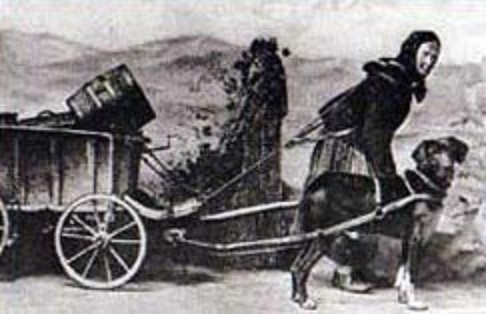History of the Rottweiler Breed
The history of the Rottweiler breed is a bit blurred in time, but there is ample of evidence supporting that this breed’s ancestry is strongly correlated with the drover mastiff dogs of ancient Rome. Peter Paul Reuben’s painting, “Wolf and the Fox Hunt” as seen above, helps prove these theories and suppositions, depicting a massive black and rust dog strikingly similar to a Rottweiler.

It is thanks to the Roman emperors that we can appreciate the Rottweiler breed today. Indeed, the Roman legion traveled with livestock to feed their massive armies, and since no means of refrigeration existed at that time, the meat accompanied the troop ”on hoof” so to say . This obviously required the assistance of herding dogs on their trips, and therefore, mastiff-type dogs resembling Rottweilers were extensively used back then. One common route was from Württemberg to the small market town of Rottweil, a cattle-trading center found along the German Neckar River.

With the fall of the Roman Empire around 260 AD, the Rottweiler breed was shortly unemployed, but shortly thereafter, found work in the German town of Das Rote Wil (the Red Tile) named after the red clay tiles unveiled from an ancient Roman bathhouse. The Rottweiler’s breed name was therefore coined after this city (later known as Rottweil) founded by the Romans in AD 73 and located just south-west of Germany. If you choose to visit this medieval town, nestled between the Black Forest and the Swabian Alb hills, you will see a statue erected in honor of the Rottweiler breed as seen below.

In the city of Rottweil, Rottweilers were involved in many honored duties, from herding cattle for great distances, to pulling carts loaded with meat. One interesting task of the Rottweiler breed involved storing money bags around their necks so to discourage any bandits in their tracks with a steely glare, while the butcher took care of customers. For this latter reason, Rottweilers were kindly nick-named back then, as ‘ Rottweiler ”metzerhunt” -”Rottweil’s’ butcher dogs”-
When herding cattle, Rottweilers were powerful dogs capable of pushing the herd and biting the hocks of rebellious specimens until they obeyed. There is belief that this breed was docked to prevent its tail from interfering with pulling carts for their masters.
Sadly, as the years went by, Europe became industrialized and railroads in the mid 1800’s became the primary means of transportation. The breed was, therefore, used sparingly for pulling carts. To make things worse, a law was also passed forbidding driving cattle over roads. The breed declined to such an extent, that according to the American Kennel Club, -the dog show taking place in Heilbronn, Germany- reported only one poor example of the Rottweiler breed in 1882.
In 1905, only one female Rottweiler was reported in the city of Rottweil. Fortunately, the breed soon became popular again thanks to the First and Second World War, when Rottweilers were used again, this time as helpful messengers, ambulance carriers, draught dogs and guard dogs.
In 1910, Rottweilers were officially recognized by the German Police Dog Association along with German Shepherds, Doberman Pinschers and Airedale Terriers. In 1924, the German Rottweiler Club registered 3,400 specimens and the first stud book was created.
Germans introduced Rottweilers on US soil in the 1920’s and Americans started breeding them in the 1930’s. The first Rottweiler to be registered with the American Kennel Club was Stina v Felsenmeer in 1931. The first Rottweiler standard was established in 1935. The breed became most popular in the 1980’s when the breed’s numbers skyrocketed. In 1992, the Rottweiler ultimately became one of the most popular breeds in the AKC with over 70,000 specimens registered.